Mesaba Procedural Comments now due Jan. 30th
January 22nd, 2006

(Burp!!! I’d wanted to make cupcakes, but I don’t have the pans, so instead I made Creole Devil’s Food Cake a la Betty Crocker, and then corncake with cilantro and creamed corn… not bad… but I’ll keep an eye out at the Salvation Army for muffin pans. It’s Krie’s birthday next week, she’ll be 8, maybe a special lamb & rice cupcake?)
The PUC has sent out a notice that the time for procedural comments on the Excelsior Power Purchase Agreement filed with the PUC has been extended.
To look at what’s been filed, there are a few ways:
1) Go to the PUC’s eDockets and under “Docket Number” type in “05” and “1993” or
2) Go to Excelsior Energy’s site and go to Regulatory Filngs and download — it’s changed, before you had to fill out a form and ask/beg them to send them to you; or
3) Go to www.mncoalgasplant.com and get it all there!
Send Comments, by January 30 @ 4:30 p.m., to:
Burl Haar
Executive Secretary
PUC
121 – 7th Place East, Suite 350
St. Paul, MN 55101-2147

What the PUC is looking for, when they say “procedural comments,” is “the appropriate process for the case, including whether it should be set for contested case hearing and what the scope of any such hearing should be.” And now they’ve added another request: “Any issues surrounding parties’ ability to obtain trade secret information still outstanding at that time should be address…” Let’s see, I sent them a Non-Disclosure Agreement to review about three weeks ago, and not one word, not a peep from Tom Osteraas, Michael Wadley or even Chris Wessman! Think that might be an issue???
The scope is logically the things set out in the statute as the hoops they have to jump through.
Here’s the relevant statutes according to Excelsior Energy.
Take a careful look at what the hoops are that they have to jump through to get all these perks (emphasis underlining added)
216B.1693 Clean energy technology.
(a) If the commission finds that a clean energy technology is or is likely to be a least-cost resource, including the costs of ancillary services and other generation and transmission upgrades necessary, the utility that owns a nuclear generating facility shall supply at least two percent of the electric energy provided to retail customers from clean energy technology.
(b) Electric energy required by this section shall be supplied by the innovative energy project defined in section 216B.1694, subdivision 1, unless the commission finds doing so contrary to the public interest.
(c) For purposes of this section, “clean energy technology” means a technology utilizing coal as a primary fuel in a highly efficient combined-cycle configuration with significantly reduced sulfur dioxide, nitrogen oxide, particulate, and mercury emissions from those of traditional technologies.
(d) This section expires January 1, 2012.
216B.1694 Innovative energy project.
Subdivision 1. Definition. For the purposes of this section, the term “innovative energy project” means a proposed energy-generation facility or group of facilities which may be located on up to three sites:
(1) that makes use of an innovative generation technology utilizing coal as a primary fuel in a highly efficient combined-cycle configuration with significantly reduced sulfur dioxide, nitrogen oxide, particulate, and mercury emissions from those of traditional technologies;
(2) that the project developer or owner certifies is a project capable of offering a long-term supply contract at a hedged, predictable cost; and
(3) that is designated by the commissioner of the Iron Range Resources and Rehabilitation Board as a project that is located in the taconite tax relief area on a site that has substantial real property with adequate infrastructure to support new or expanded development and that has received prior financial and other support from the board.
Subd. 2. Regulatory incentives. (a) An innovative energy project:
(1) is exempted from the requirements for a certificate of need under section 216B.243, for the generation facilities, and transmission infrastructure associated with the generation facilities, but is subject to all applicable environmental review and permitting procedures of sections 116C.51 to 116C.69;
(2) once permitted and constructed, is eligible to increase the capacity of the associated transmission facilities without additional state review upon filing notice with the commission;
(3) has the power of eminent domain, which shall be limited to the sites and routes approved by the Environmental Quality Board for the project facilities. The project shall be considered a utility as defined in section 116C.52, subdivision 10, for the limited purpose of section 116C.63. The project shall report any intent to exercise eminent domain authority to the board;
(4) shall qualify as a “clean energy technology” as defined in section 216B.1693;
(5) shall, prior to the approval by the commission of any arrangement to build or expand a fossil-fuel-fired generation facility, or to enter into an agreement to purchase capacity or energy from such a facility for a term exceeding five years, be considered as a supply option for the generation facility, and the commission shall ensure such consideration and take any action with respect to such supply proposal that it deems to be in the best interest of ratepayers;
(6) shall make a good faith effort to secure funding from the United States Department of Energy and the United States Department of Agriculture to conduct a demonstration project at the facility for either geologic or terrestrial carbon sequestration projects to achieve reductions in facility emissions or carbon dioxide;
(7) shall be entitled to enter into a contract with a public utility that owns a nuclear generation facility in the state to provide 450 megawatts of baseload capacity and energy under a long-term contract, subject to the approval of the terms and conditions of the contract by the commission. The commission may approve, disapprove, amend, or modify the contract in making its public interest determination, taking into consideration the project’s economic development benefits to the state; the use of abundant domestic fuel sources; the stability of the price of the output from the project; the project’s potential to contribute to a transition to hydrogen as a fuel resource; and the emission reductions achieved compared to other solid fuel baseload technologies; and
(8) shall be eligible for a grant from the renewable development account, subject to the approval of the entity administering that account, of $2,000,000 a year for five years for development and engineering costs, including those costs related to mercury-removal technology; thermal efficiency optimization and emission minimization; environmental impact statement preparation and licensing; development of hydrogen production capabilities; and fuel cell development and utilization.
(b) This subdivision does not apply to nor affect a proposal to add utility-owned resources that is pending on May 29, 2003, before the Public Utilities Commission or to competitive bid solicitations to provide capacity or energy that is scheduled to be on line by December 31, 2006.
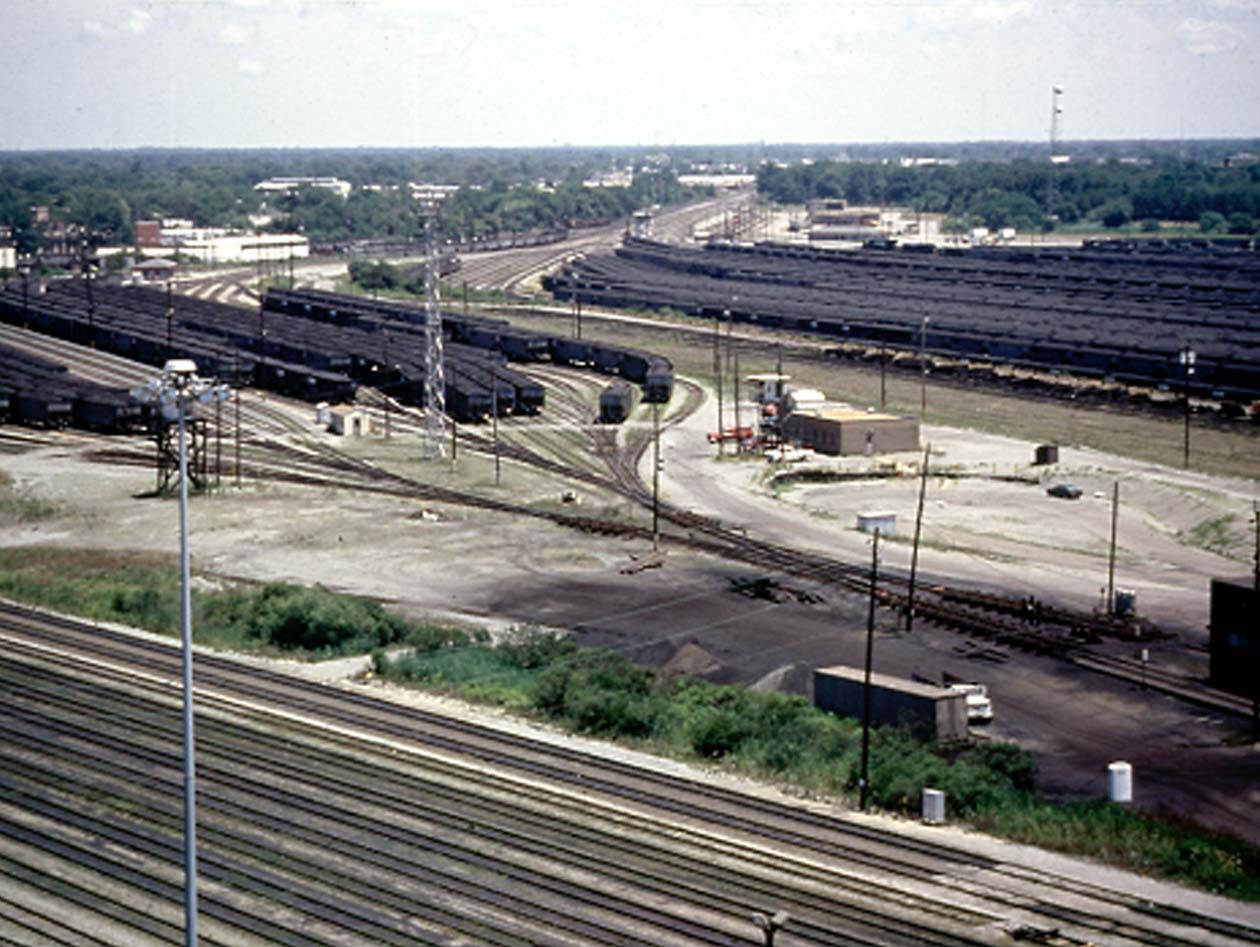
Excelsior Energy’s Mesaba PPA Comments due 1/20
January 10th, 2006
Excelsior Energy has submitted a Power Purchase Agreement (PPA) to the Public Utilities Commission for approval and Comments on the procedure for the Docket are due NEXT WEEK! Not much time, lots of reading, so get busy.
It’s not a typical PPA. Here’s the catch — they’ve not agreed with Xcel on a PPA, it’s not a signed PPA. Excelsior is asking the PUC to order it under the terms of the 2003 Prairie Island bill.
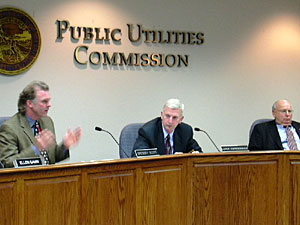
(old photo of PUC, Greg Scott on left is gone, that’s a whole ‘nother story)
This is the Mesaba part of the Prairie Island bill and below is the part of Minn. Stat. 216B.1694 that mandates a PPA with Xcel:
(7) shall be entitled to enter into a contract with a public utility that owns a nuclear generation facility in the state to provide 450 megawatts of baseload capacity and energy under a long-term contract, subject to the approval of the terms and conditions of the contract by the commission. The commission may approve, disapprove, amend, or modify the contract in making its public interest determination, taking into consideration the project’s economic development benefits to the state; the use of abundant domestic fuel sources; the stability of the price of the output from the project; the project’s potential to contribute to a transition to hydrogen as a fuel resource; and the emission reductions achieved compared to other solid fuel baseload technologies;
This drives me batty: Why don’t people understand that the fact of a mandate is proof that WE DON’T NEED THE ELECTRICITY? Why don’t people understand that if we have to give them every perk in the book and even make up some new creative ones (I never said Micheletti isn’t shrewd!), so far they’ve gotten $55 million in grants, why, oh why, oh why don’t they understand that this project is not economically viable? Folks, this is transmission engineering, it ain’t rocket science!
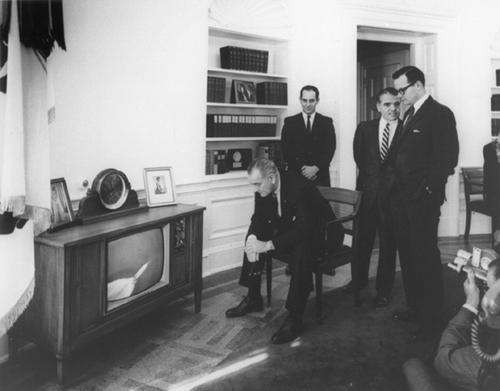
Anyway, here’s the link for the PPA Petition and all the exhibits, it’s delightful reading. CLICK HERE.
COMMENTS DUE JANUARY 20.
The PUC is taking PROCEDRUAL comments on this, and comments must be received by 4:30 p.m. Friday, January 20, 2006.”
The scope of Comments is narrow, THIS IS IMPORTANT, be on point:
Parties wishing to comment on the appropriate process for the case, including whether it should be set for contested case hearing and what the scope of any such hearing should be, should file written comments with the Commission by 4:30 p.m., Friday, January 20, 2006.
Here’s a hint: Look at the statutory quote above, particularly the bold part, and from there, figure out the scope of the hearing, what all should be included to address the points listed.
PUC staff on this Docket (E-6472/M-05-1993) are Susan Mackenzie (651) 201-2241 or Janet Gonzalez (651) 201-2231.
To look up this docket, go to www.puc.state.mn.us and click on “eDockets” and plug in the “05-1993” in the Docket number spaces.
Here’s the Docket at the agency formerly known as the EQB.
Here comes Mesaba. Do ya think that anyone cares that in the MISO study, G477, only 90MW of all that Mesaba output gets to sink? Go here and search for 477…. think of the transmission upgrades in our future!

Mesaba/Excelsior files PPA with PUC
December 29th, 2005
Excelsior Energy has filed a Power Purchase Agreement with the Public Utilities Commission for its Mesaba Coal Gasification Plant.
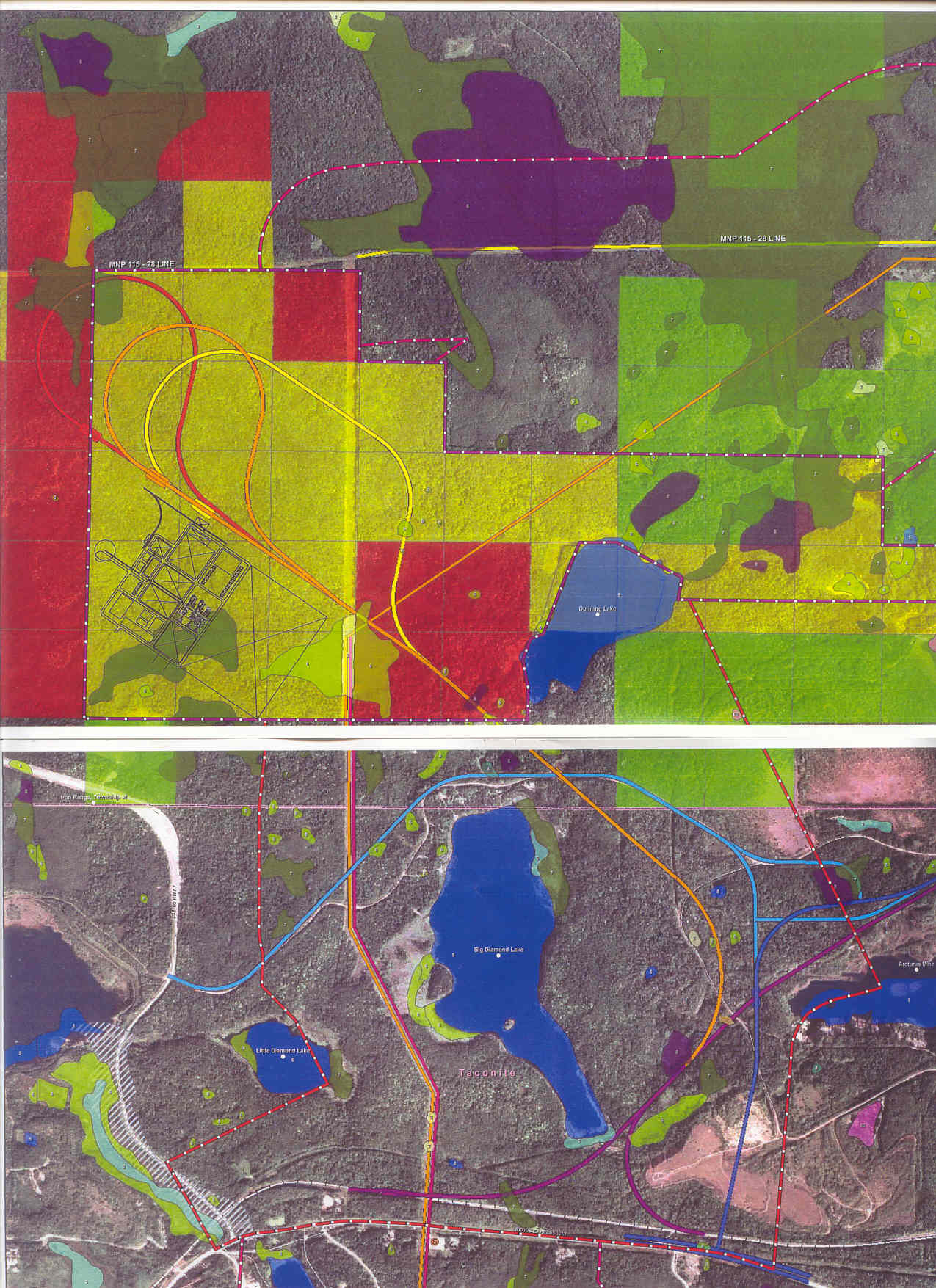
It made the front page of the Mesabi Daily News:
Excelsior files for pact
Petition goes to state PUC for agreement on power purchase
Excelsior’s Press Release about PPA with a few details
But here’s the real poop — the filings:
PUC Docket: E6472/M-05-1993
Comment period expected to be open until January 26, 2006 (a staff best estimate at this time). PUC will send Notice.
But let’s have some fun here. They’re limiting access to the filings to those who request them, and they have a special form, so let them know you’re watching and you want more info about it! Here’s that site:
Let them know we’re paying attention!
For example, pay attention to Section 1, starting at p. 37, and if you can read that without splitting a gut laughing or puking, well, you must work for Excelsior. And dig footnote 65, where they note that though we produce 20% of the world’s CO2, China consumes more coal than we do… so we’re supposed to develop this technology so they can use it? Ummmmm, color me addled by smog, but don’t those figures mean that they’ve already got something figured out about CO2 emissions that we don’t? But then again, look where reliance on coal gasification has gotten them — check their water pollution problems. Are WE paying attention?
Comments for the DOE’s Mesaba Environmental Impact Statement
November 17th, 2005
Monday the 14th was the day that Comments were due to the Dept. of Energy regarding the Scope of the Environmental Impact Statement that is to be done in conjunction with the state’s EIS.
Here’s where the “preferred site” is, from a STrib article:

Here’s the notice with more details on Mesaba than we’ve ever seen before.
My Comments: Download file
Here are the Sierra Club Comments on the DOE’s EIS.
Clean Water Action Alliance Comments: Download file
ME3/Waltons Comments: Download file
From Excelsior’s website:

And for those of you who need more, here’s the most recent update from the MAPP SPG meeting minutes on transmission for Mesaba:
Mesaba Generation: Steve S. reported that the last update on this project was given on May 5, 2005 meeting. The ad-hoc committee for the studies consists of AEP, MP, GRE, XEL and MH. For the first unit (MISO project no G477) rated 530 MW located at Hoyt Lake (near LTD Taconite) the designated point of interconnection is Forbes 230 kV bus. The plant was designated as network resource. Last March, screening and stability results were completed. This project assumes that Arrowhead â?? Weston project is in place. Some 230 kV breakers at the Forbes bus would need to be replaced. The Phase II study, which is the system impact study, started on May 11, 2005 by PTI. It uses summer peak load flow cases. One 115 kV MP line is overloaded (including in the base case as well). MP is completing the short circuit studies. There were some problems with the 2005 stability model, as a result stability studies were delayed, but they are now under way. The results will be reviewed at an October 7, 2005 meeting.
For Unit 2, rated up to 600 MW (Project no G519), an alternate location north of the taconite plant was proposed. The in-service date is one year later at 2011. The point of interconnection is the Blackberry 230 kV bus. It is assumed that the Boswell â?? Wilson 230 kV (in-service 2010) will be built by this date, but the Maple River â?? Benton 345 kV line will not likely be completed (in-service 2012). This unit will require conversion of existing Blackberry â?? Benton and Blackberry â?? Arrowhead from 230 kV to 345 kV and construction of a new Blackberry â?? Riverton 230 kV line.
Mesaba marches on…
And the same meeting minutes note that they’re planning, as if the six “Phase I” projects weren’t enough, they’re planning on resubmitting the Chisago Transmission Project application before year end! But we’ve been hearing that since 2001.
Mesaba – Comments on Scope of EIS due November 14
October 28th, 2005
Comments are due on the Scope of the EIS by November 14, 2005. Here’s the DOE’s Notice of Intent: Download file
Send to:
Richard Hargis
M/S 922-342C
U.S. DOE – NETL
P.O. Box 10940
Pittsburgh, PA 15236-0940Email to:
richard.hargis@netl.doe.gov
Fax to:
(412) 386-4775
I have to approach this project with humor, because it is so damn absurd that it went forward, and now that it’s going forward in a greenfield — what’s wrong with this picture. It’s so bizarre that those with the resources and who oppose coal plants were silent as the largest coal plant, the largest power plant of any type, in the history of Minnesota rolled through the legislature, and remain silent today. Is this the energy future we want?
Look again at this view of the coal train route on the other side of the lake! The plant would be way off to the left. This is the energy nightmare moving towards reality.

The site maps are here. They’re not on the Excelsior site. Click here to ask them to post information!
Here’s my notes from their Power Point — handouts on this project only go one way — I had to take pictures of them!
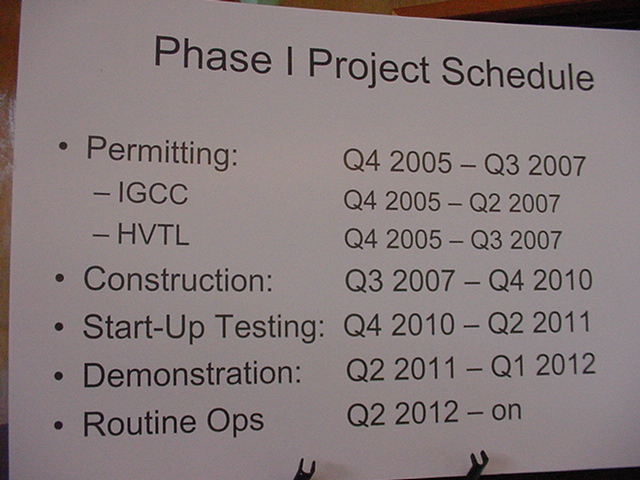
Phase II
Construction of Phase II IGCC power station overlaps
construction of Phase I station
* Resource requirements, emissions, effluents and byproducts
double in most instances
* 160-180 permanent, full-time staff (Phase I+II)
* Increased water demands
o Sufficient water supply must be demonstrated
o Use of additional water sources likely
* Commercial in-service planned for 2013Public Utilities Commission
* Phase I construction: Q3 2007 � Q4 2010
o 1,000 construction workers on-site at peak + vehicles
o 25 acres of land required for IGCC plant; additional 80
acres required for equipment laydown plus 5 acres for
concrete batch plant
* Phase I operation: Q4 2010 � onward
o 100-120 permanent full-time workers* Resources consumed & by-products generation: Estimated worse
case
o Coal 8,230 tons of coal per day: 4-5 round-trip unit train
trips per week
o Water 6,500 gallons per minute peak 4,500 gallons per
minute annual avg.
o Marketable byproducts: 500-800 tons/day slag; 30-160
tons/day elemental sulfur
o Materials for disposal: 2,200 tons/yr ZLO salts; 75 tons/yr
carbon
o Very low emissions of air pollutants, including mercury
___________ year)
* No discharge of process waters used to clean syngas on _______
* West Range site flood control
* Water used for evaporative cooling discharged to Holman Lake
(West Range)
* Four year search effort
* Criteria utilized to narrow list of potential sites
o Licensability
o Community support
o Sufficient water supply for Phase I & II developments
o Access to infrastructure sufficient to meet project needs
– Optional rail providers
– Existing corridors to reach major electric
substations(s)
o Site control
o Lake Superior Basin watershed
* Ongoing investigations
Note the above says “Lake Superior Basin watershed — this is not correct for the West Range – Taconite site — it’s in the Mississippi, where the Swan River and Mississippi are already listed as impaired. Check the PCA’s map!
Here’s the info from the meeting from the feds, called Mesaba Energy Project. Download file
Here’s the new map or site plan, note the green line between the two lakes — that’s new, a landowner discovered Co. Rd. 7 would be rerouted over his land at the meeting — no one had bothered to contact him.
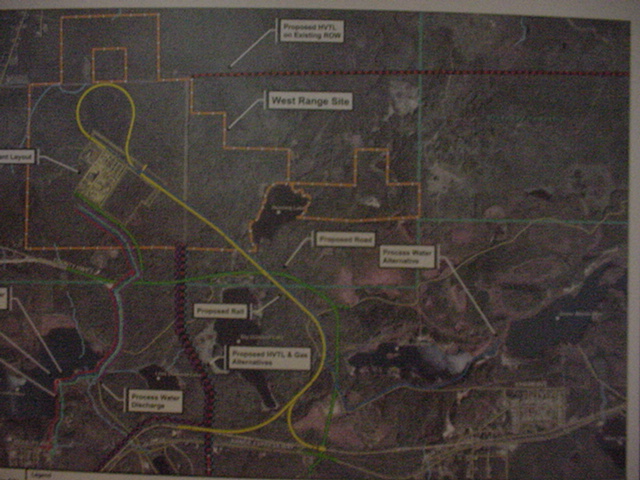
Here’s a drawing of what it might look like — remember, everything is preliminary and changable:

And here’s a more schematic view from above:
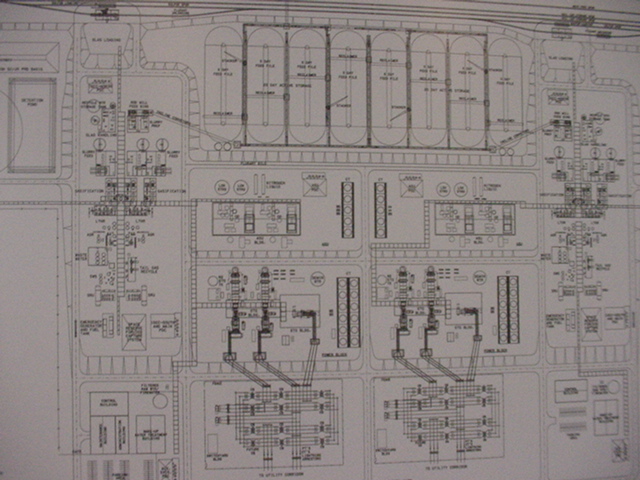
Here’s the DOE-Notice of Intent with more info on the project than we’ve ever received before: Download file
And I noticed a tie that should be clarified. Ron Dicklich, in his “we NEED this power,” “we’ll freeze in an incubator in the dark without a job” project stump speech, declared that he “works for GRE and Range Association of Municipalities and Schools,” but there’s more:
What he neglected to say was that he’s also promoting MSI, which is to be located in Nashwauk, and which is planned to share rail infrastructure with the Mesaba Project — and perhaps an electrical customer — can MSI be built without the ready supply of electricity? Here’s the info on the MSI tie that should have been disclosed:
MSI outlines $1/6 billion dollar project
MSI project moving forward
I hate it when people hide their vested interests…
This is the same Mesaba and MSI connection that Miles W. Lord is concerned about.